1. Performance, Engine, Refinement & Noise:
The Pulsar 220 DTS-i, true to its name, sports a 220cc, single cylinder, air-cooled engine developing a peak power output of 21.04PS @ 8500rpm and a peak torque of 19.12Nm @ 7000rpm. Cranking up the engine sounds typically Pulsarish with the starter motor cranking the engine a bit longer than usual. The auto-choke works beautifully to bring the engine to life which then idles steadily at 1,400 rpm.
Slotting it into the first gear immediately transmits a positive feel and with a slightly heavy clutch, the bike pulls forward with an urgency befitting its cubic capacity. Shifting up the gears, you realize the amount of attention Bajaj has given to the feedback of customers all around, with the current model’s gearbox definitely better than previous generations. The power band kicks in about 4,000 rpm and goes unrelenting all the way to its red line. The low-end may not be as exciting as you’d be hoping for, but the mid-range more than makes up for it.
At a calm, city speed of 50 kmph, the engine’s characteristic growl goes missing, replaced instead by a steady hum and noticeable fairing vibrations. Close the throttle and immediately jerk it open, carburettor lag makes itself apparent. Refinement is not Bajaj’s forte, yet we will have to concede that improvements are showing, with the current generation Pulsars outdoing their predecessors. Performance, however, is what this bike is all about. She carries the tag “The Fastest Indian,” and as far as made-for-India motorcycles are concerned, she definitely is unbeatable in a straight-line. The biggest bore Pulsar that you get makes it very different from its siblings, yet staying true to the family traits.
2. Looks & Feel:
The Pulsar 220 comes in two variants, 220F and 220S. Let’s get one thing straight right away. The only distinguishing element of the 220F is the quarter fairing. The muscular and taut tank, the side and rear panels and the tail piece are now generic to the Pulsar range. But that quarter fairing alone makes the 220F stand out among the crowd. Viewed head-on, the vertically stacked projector and parabolic reflector headlights, the pilot lamps and the small air vents in the fairing all come together to give you an impression of a crouching wolf that’s ready to pounce. The rear-view mirrors look more like its ears, standing up on alert. There’s a sense of purpose to the front end that other Pulsars in the range can’t quite pull off.
Further back, the chunky brushed aluminium exhaust adds to the poise and again separates the 220 from her siblings. The all black styling further goes a long way in enhancing the menacing poise the 220F imparts.
On the move, among the first things to strike you would be the heavy front. The riding posture, though not extremely sporty, isn’t commuter-ish either. The slightly forward stance is very useful at highway speeds, where it puts the rider in better control of the bike. We’d say it’s a good balance and an overall commanding position that is useful for the front heavy nature of the bike. Compared to her previous iteration, the fuel injected 220, you can feel the rake pulled in, and as a result you feel you’ve hit a taller than usual speed breaker rather than climbed onto it. This though, has its uses elsewhere, as pointed out later.
3. Value For Money:
At 87,312 INR OTR Bangalore, the Pulsar 220F is shattering value for money. It takes you from point A to point B in as much style and panache as you’d need in Indian conditions. However, in true Pulsar-ish nature, small niggles here and there do crop up but it also helps in keeping the rider involved with her.
Bajaj has priced the spares cheaper than the competition and that’s a big draw towards ownership stakes. The maintenance required depends mostly on your personal riding habits, and the 220 sure doesn’t shy of throwing tantrums at owners that do not take good care of her. The spares last long, thus coupled with their low price, it doesn’t cost much to keep her going.
The brand image of Bajaj Pulsar ensures you get a good resale value for the bike since there is a good demand for them. Overall, we’d say it’s a fantastic value for money.
4. Accessories & Goodies:
The Pulsar 220 set the standards when it came to the number of goodies offered on a motorcycle, which was later emulated by other manufacturers. Top of its list of USP is the projector headlamp setup, which is one of the best stock headlights ever.
With clip-ons, digital speedometer console, backlit switchgear, side stand indicator, self-cancelling turn indicators, magnetic contact free sensors for the switches, LED tail lamps, over-revving warning via a flashing red LED that doubles as a reserve indicator, disc brake setup at the front and the back with steel braided lines for the front brake, full DC electricals with headlights that switch off automatically when cranking the engine and then turn back on, low battery level and low engine oil level indicators, tubeless tyres on strong, chunky alloys, the Pulsar 220 is loaded with tech and goodies to make your ride a more pleasurable affair. Thumbs up to Bajaj.
5. Handling & Braking:
Throughout the years, Bajaj Pulsars were known for a lot of things, but being an agile and sharp handler was never one of them. Bajaj came under a lot of criticism for the previous iteration 220’s soft handling and the improvements show up in the new 220F around the corners. The bike feels more stable now and lets you concentrate on your line than keeping her stable. With the rake having been pulled in, it’s much faster to dive into corners now. That said, however, it still remains quite some distance from the handling capabilities of its competition.
Employing disc brakes at both ends ensure the bike comes to a quick halt under hard braking. The nose dive issue has also been resolved to quite an extent over the older iteration and we did not experience a nose dive that should be a cause of concern. The steel braided brake line offers good feedback and requires slightly less effort as a result of it is good at shedding speed quickly. A decent, well rounded set of brakes for the “Fastest Indian”.

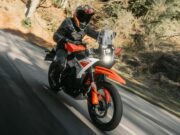
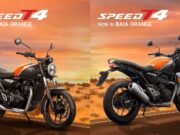


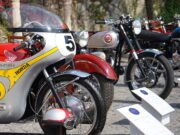
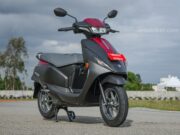
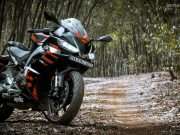
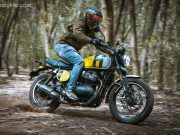
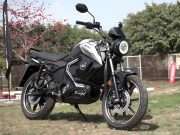
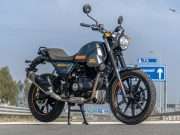
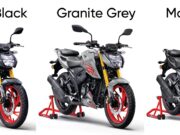
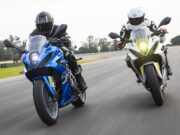
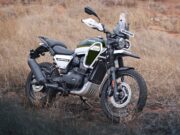


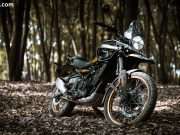





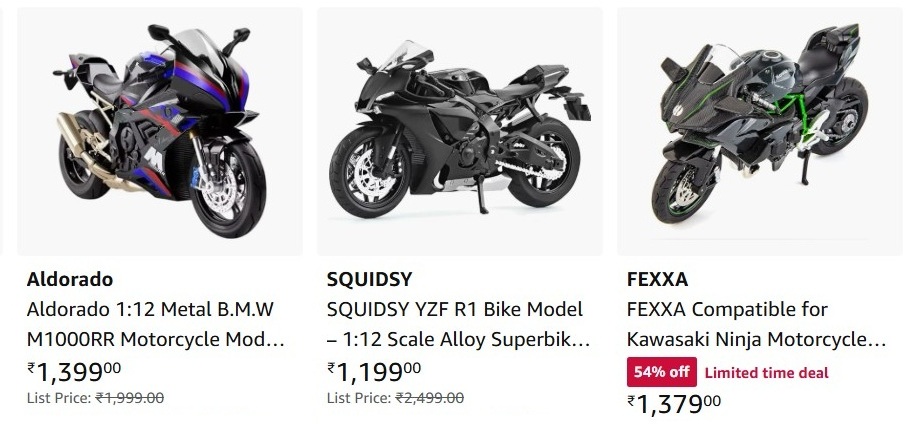







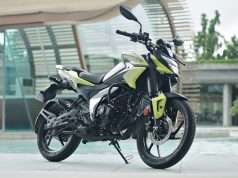
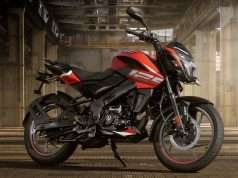
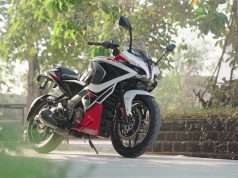
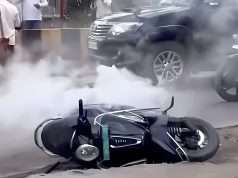
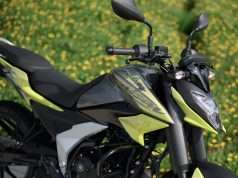
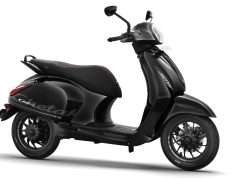
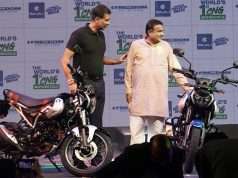




Yup.. Definitely male..
Its a HE dude…not a SHE !!!